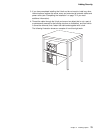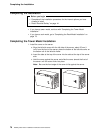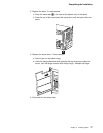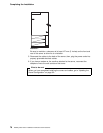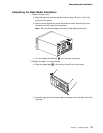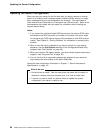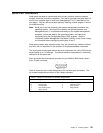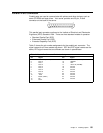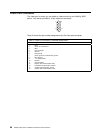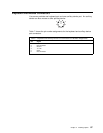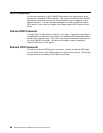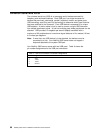
Serial Port Connectors
Serial ports are used to communicate with printers, plotters, external modems,
auxiliary terminals, and other computers. Your server provides two serial ports (A
and B), and a special type of serial port (Management Port C, described on the
next page). You can add more serial ports by installing a serial adapter in one of
the expansion slots.
Note: Serial port A can be shared by the system-management processor and
operating system. Serial port B is used by the operating system only.
Management port C is controlled exclusively by the system-management
processor, cannot be used by the operating system, and cannot be
configured using the Configuration/Setup Utility program. See the
“Advanced System Management Information” section of this
Server Library
for information about configuring serial ports A and C.
Serial ports transfer data
asynchronously
; they can transmit any number of bits at
any time, with no restriction on the duration of the pauses between characters.
The serial ports transmit and receive data and commands at a rate of 300 bits per
second (bps) up to 115 200 bps. The bits-per-second measurement is commonly
referred to as the
baud rate.
Each of the two serial connectors provided on your Netfinity 5000 server uses a
9-pin, D-shell connector.
1
5
69
Table 4 shows the pin-number assignments for the serial port connectors. The
pin-number assignments conform to the industry standard.
Table 4. Serial Port Connector Pin-Number Assignments
Pin Signal Pin Signal
1 Data carrier detect 6 Data set ready
2 Receive data 7 Request to send
3 Transmit data 8 Clear to send
4 Data terminal ready 9 Ring indicator
5 Signal ground
Chapter 4. Installing Options 83



